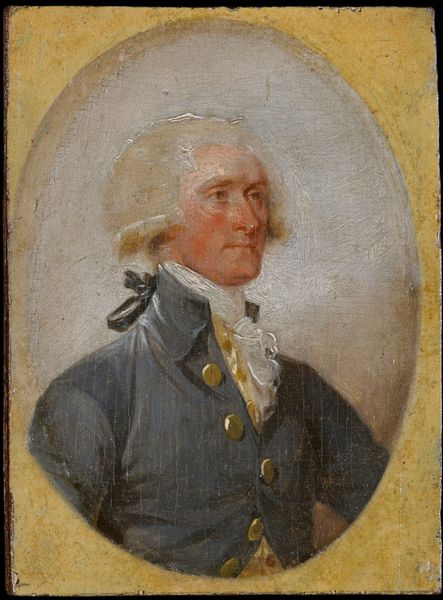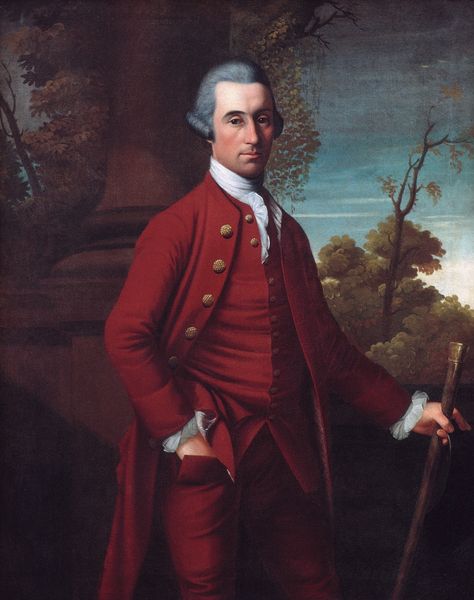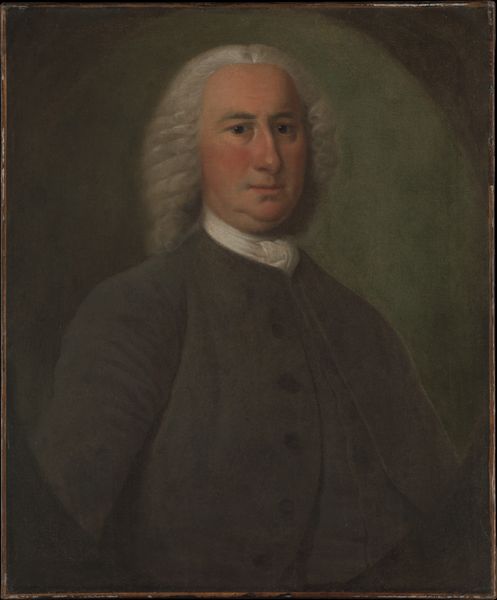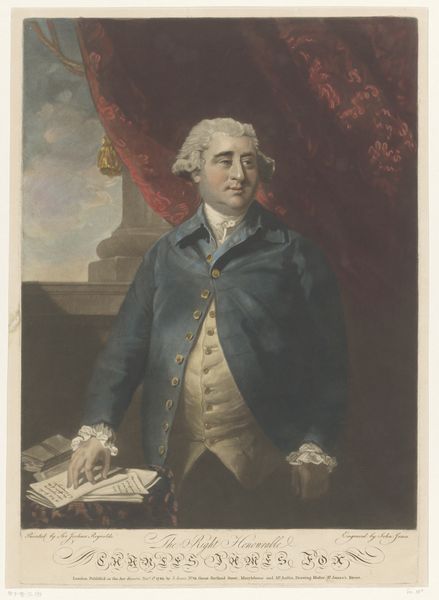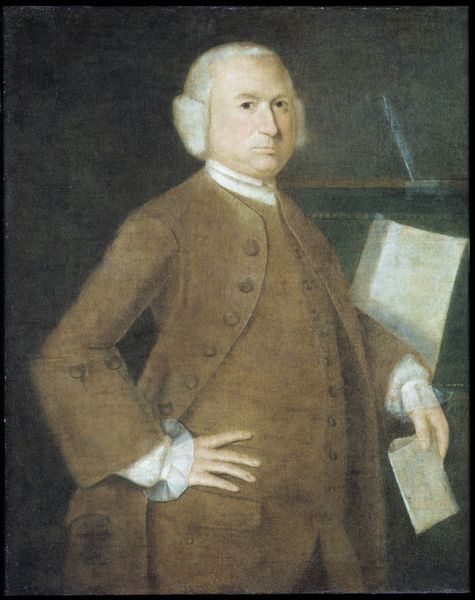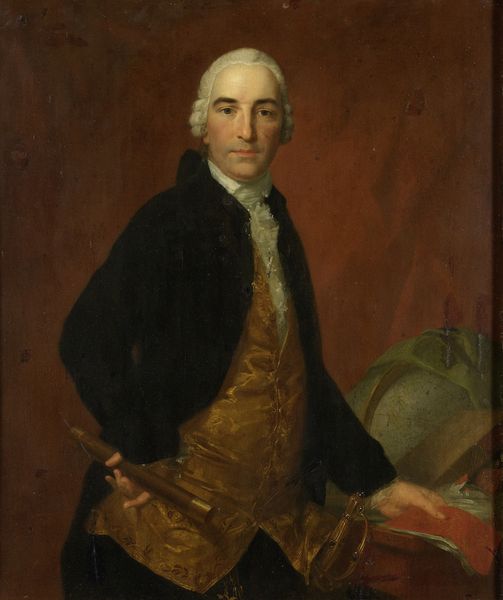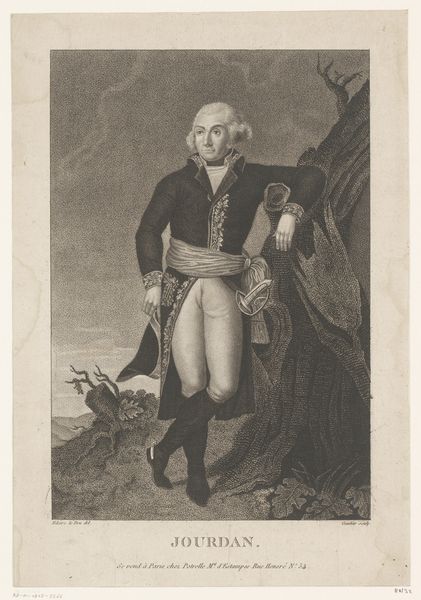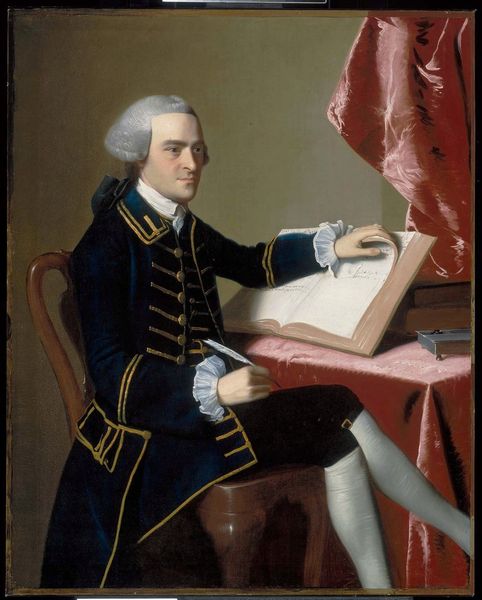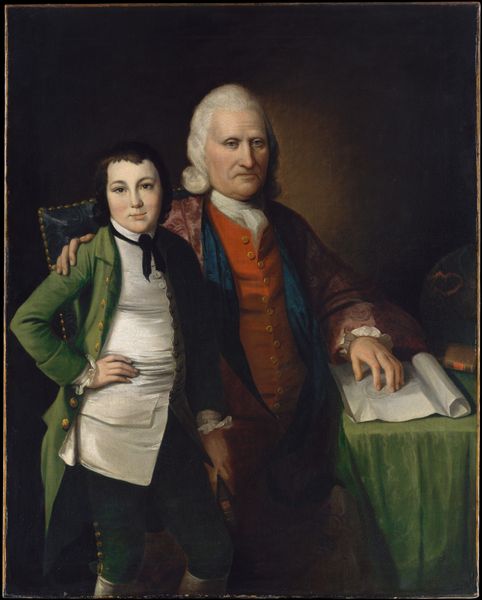
Dimensions: 48 1/2 x 38 1/2 in. (123.2 x 97.8 cm)
Copyright: Public Domain
Curator: Let’s discuss this striking portrait, "Jeremiah Platt," crafted in 1767 by John Mare. What's your first take on this piece? Editor: It exudes a certain quiet confidence, almost a somber reserve. The blues and browns create a very grounded, serious mood, doesn't it? And he's placed just so, like he expects deference. Curator: Indeed. We can consider how these portraits served as representations of social standing and power. In colonial America, commissioning such a painting was a deliberate act, a way for the sitter to project a certain identity. How do you feel it succeeds or fails at communicating that? Editor: It does that effectively, but there's also a clear gendered component at play. The delicate ruffles, the somewhat passive hand placement… it softens the image of power, making it palatable. It feels very controlled, very self-aware. What kind of socio-economic narratives would a closer look uncover? Curator: Examining probate records, property ownership, and perhaps even mercantile connections can indeed reveal deeper narratives about Platt’s position within the burgeoning merchant class of colonial New York. This portrayal also aligns with academic conventions around the figure and their social environment. The drapery is a classic touch. Editor: I’m interested in the politics embedded in this "classic touch." Who was permitted access to the performance of social climbing through portraiture, and whose stories remained unpainted? The power dynamics of who gets represented and how remain so vital today. Curator: Absolutely. Consider the implications of artistic patronage and how these commissions further solidify existing power structures. It serves as a reminder that visual culture actively shapes our understanding of history and whose narratives get told. Editor: Exactly. "Jeremiah Platt" becomes more than just a likeness; it's a reflection on the politics of representation itself. It is definitely worthy of critical re-evaluation and broader contextualization, ensuring the piece resonates with new questions from contemporary audiences. Curator: I think that it pushes us to really examine our place within the ongoing and dynamic art historical narratives and social debates surrounding portraits. Editor: Precisely, so important when considering such art that can provide new understandings for emerging audiences.
Comments
No comments
Be the first to comment and join the conversation on the ultimate creative platform.

